3 Exercises for Better Posture | Chiropractor for Posture in Boulder, CO
Hey guys, Dr. Duff here and Dr. Emery. And today we’re going to talk about three different exercises that we can utilize to help our posture and prevent our posture from slipping. And when it comes to posture, there are some common postural distortions or abnormalities that we do see commonly in society today. So we’re going to cover those main three today. And then we’re going to talk about what are some ways that we can help to avoid or correct them throughout the day throughout the week, so that it doesn’t affect us as much for people that are constantly sitting at a desk or they’re constantly on their feet, and the bodies just need a rest.
Forward Head Posture and How We Treat It
All right. So the first one that I want to talk about is forward head posture. This is also known as anterior head carriage, or text, neck or tech neck, where we see kind of in our society, everything is down below us, and our head starts leaning down. And our head is like a bowling ball. And if you picture this, you hold it close to your body, and it’s really light. But as it gets further and further away becomes harder and harder to hold to the point where you’re straining, and that has all kinds of effects on our shoulders, our neck, it can cause things like headaches, it can cause so many different things like going into soreness into the arms all the way down into the fingers, numbness, tingling, cold hands. So we’re gonna talk about a few ways to help fix those.
Corrective Exercises For Forward Head Posture
Now, one of the exercises that we like to do is going to help prevent losing the curvature of these natural arcs into our spine. And when as our head starts to come forward, we lose that natural curvature. So one of the great exercises we’re going to show you here with Dr. Emery is removing that forward head posture and increasing that curvature and strengthening those muscles to help support that position. So from the side, you can see pretty well that Dr. Emery for head starts to come forward, the corrective exercise that we’re going to do is start by sitting up nice and tall. And then we’re going to kind of swoop our head up and forward and up. And then we’re going to do is we’re going to focus on bringing it back back down at a 45 degree angle this way to start translating the head backwards and accentuating that curvature in there as well. And I like to call this one the turtle shell, right because it looks like a turtle sticking its head out. And then it goes back into its shell. And so restricting all the back muscles, and all of the traps and the neck muscles deep to here to help support a more strengthened postural position. So we do three sets of a five second hold, we’re going to hold it there for five seconds, it’s going to get all those stabilizing muscles. And you might feel it’s a little uncomfortable at first, especially if you do a forward head posture.
So go easy on this one, I don’t want you to do too much. But it’s great, you can do this at your chair, you can do this in the car, you can do this when you’re just standing around just to re-calibrate and get that head into a great position. So that’s a great exercise for forward head posture.
The Superman Exercise for Improving Hip Flexor Strength
The next one that we’re going to focus on is when it comes to posture, we tend to have these kind of forward hips. And what that what that does is it really tightens up our hip flexors turns off our glutes and our posterior chain. And then sometimes the head will come forward with that and kind of looks like this logic posture here. So we get this kind of lower cross upper cross syndrome kind of thing going where certain muscle groups are starting to tighten up and starting to weaken in other areas. So this one’s great, you can do it anywhere on the floor. Okay, so I’m going to have Dr. Emery lie down on the table face down as an example here. So she’s lying face down so that we can start to activate the glute muscles and the shoulder muscles at the same time. And this is called the Superman or Superwoman exercise, and we’re gonna go contralateral, meaning she’s going to do her right leg and her right, sorry, her right leg and her left arm at the same time. So we’re actually going to do opposites. And what she’s going to do is she’s going to raise up and lift her entire leg as she lifts her entire arm at the same time. So she’s focusing on the right glute, and keeping that activated, and then the right shoulder blade and keeping that activated, then go ahead and relax. So now she’s going to switch to the other side, we’re now she’s going left leg and right arm at the same time, it creates a little bit more arch into our spine, and starts to help strengthen and activate these muscles. These can be done one of two ways we can either hold it there for a 10 second hold. Or we can alternate and do 10 reps on each side.
So that’s a great way to help strengthen the posterior chain and the glutes and the low back, but also open up the shoulders which is going to help us get our head back at the same time. So the Superman and Superwoman stretch is fantastic to do throughout the day, to help with our posture. Go ahead and relax after me. And when you’re ready, you can go ahead and set up. The last exercise I want to discuss is a little bit more geared towards when our head comes forward and our shoulder start to round.
The Wall Angel Exercise to Help Shoulder Stability
So one of the most prevalent ways of creating shoulder instability, right is injury and secondly is going to be forward head posture because as the head comes forward, the shoulders begin to round in the shoulder rotates inward and creates a lot of dysfunction here. So our goal is going to be to get the shoulders back. And we have an awesome exercise for this one, to help strengthen this position called the wall angel. So Dr. Emery is in our wall angel position here, she’s got her hips against the wall and her back against the wall, and also her head is going to be touching the wall. Now what she’s going to do is she’s going to bring her arms up to about 90 degrees on both sides facing straight up towards the wall here. And the goal is to get the elbows and the wrists to touch. Now, even just doing that is sometimes very difficult. So if you can’t make it there, no pressure, that’s going to be our goal to try and get the elbows and the wrists back and hold that for 10 seconds. Our next step is going to be to slightly and slowly raise the arms up to a level that’s comfortable. And hold that there for about 10 seconds. Now you may notice one starts getting really tired or starts cramping up, that’s totally possible. And that’s really part of the process too is because these muscles have been shut off or, or turned down for a really long time. And as we wake them up, they’re gonna get responsive, and they’re going to start sending some signals. Okay, so go lightly with this one, this one is best to do kind of pulsing or pumping repetitions at first, until you can get to the point where you can bring it out to your max range of motion and hold that for 10 seconds.
So again, this can be done three to three sets of a 10 second hold, or 10 pumps throughout the day. And this is really easy, because all you got is all you need to use is your body and the wall. And that should be available pretty pretty handily in the work environment or throughout the day. So whether you do this at work or at home, it’s a great way to warm up and exercise our shoulder muscles to open up the shoulders prevent them from falling forward as our head comes forward at the same time. I hope these help.
Some of these exercises are great to help combat the stress and force of gravity. But there are times where we have so much fibrosis and adhesions in our posture that it may take additional work. And these are types of things that we can help here in the office to overcome those limitations by assessing your posture and getting to work on the posture, things like adjustments and traction, and some of our other therapies that we use.

